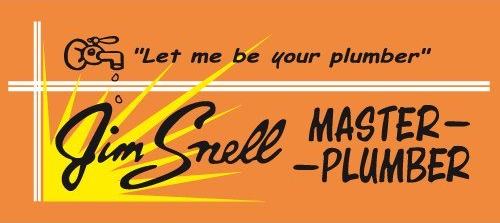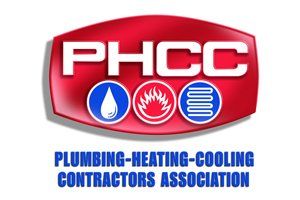5 Signs You Need a Plumber
Plumbing issues can be daunting and often require the expertise of a professional. Whether you're experiencing minor leaks or significant water damage, knowing when to call a plumber is crucial. This article outlines the key signs indicating that it's time to seek professional plumbing assistance. Ignoring these signs can lead to more serious problems that could wreak havoc on your home and lead to expensive repairs. By recognizing these signs early, you can avoid these potential pitfalls and keep your plumbing in top condition.
1. Persistent Low Water Pressure
Low water pressure can be frustrating, impacting your daily routines from showering to washing dishes. Common causes include clogged pipes, leaks, and issues with the municipal water supply. Sometimes, sediment build-up in the piping system can also reduce flow efficiency. Understanding the specific cause of low water pressure is essential for finding a solution. Faulty pressure regulators and valve issues may also be contributing factors to consider.
Daily activities depend on adequate water pressure; without it, efficiency and convenience are compromised. Low pressure makes showers less refreshing and can result in longer wait times to fill baths or sinks. Appliances such as dishwashers and washing machines may not function properly, leading to inadequate cleaning. Tasks that used to be quick and easy can become time-consuming chores. This persistent problem can reduce satisfaction and effectiveness in your home environment.
A professional plumber is trained to diagnose and solve complex plumbing problems effectively. They can pinpoint the exact cause of low water pressure and recommend suitable solutions. Using sophisticated tools, plumbers can access hard-to-reach areas to check for leaks or blockages. Moreover, their expertise ensures that plumbing issues are resolved safely and efficiently. With the U.S. plumbing industry employing approximately 736,000 people by 2025, according to Jobber, finding a reliable professional is increasingly accessible.
2. Water Discoloration
Water discoloration is a clear sign that something is amiss with your plumbing system. It can be alarming to see yellow, brown, or even reddish water flowing from your faucets. Typically, discoloration results from rust in the pipes or issues with the main water supply. Water quality is crucial for health and hygiene, making this an issue that requires prompt attention. Spotting discoloration early can help prevent further deterioration of your plumbing systems.
Rusty pipes are a common cause of water discoloration, particularly in older homes. As pipes age, they corrode and release iron into the water, hence the reddish or brownish hue. Other sources of discoloration include disturbances in the water supply lines or mineral build-up. During pipe maintenance or construction work, sediments might enter the water supply temporarily. It's essential to correctly identify the cause to address it appropriately.
Discolored water poses significant health risks if consumed or used for cooking. Contaminants like rust and other sediments can result in gastrointestinal issues and irritation. The aesthetic quality of water is also compromised, impacting its use for bathing or laundry. Ensuring clean, clear water is vital for maintaining hygiene and preventing health issues. Professional assessment ensures that you address both the cosmetic and underlying health issues related to water discoloration.
3. Slow or Clogged Drains
Slow or clogged drains are a common issue that can range from minor annoyances to significant plumbing problems. Identifying the clog's severity is crucial for determining the appropriate response. While minor clogs might be resolved with simple solutions, persistent issues could indicate deeper blockages. Symptoms like water backing up or multiple slow drains suggest more serious issues in the system. Providing accurate details to a plumber can expedite the resolution process.
Many people attempt to clear clogs using household remedies like baking soda and vinegar or store-bought drain cleaners. While these may work temporarily, they are often insufficient for stubborn clogs. Professional plumbers are equipped with high-grade tools such as snake augers and hydro jets for thorough cleaning. These tools can dislodge even the most persistent debris, restoring optimal flow. Opting for professional help minimizes the risk of damage and ensures long-term solutions.
Ignoring clogged drains can lead to more serious plumbing issues, including potential pipe bursts. Prolonged blockages increase pressure within the pipes, which can result in leaks or structural damage. Furthermore, standing water due to clogged drains creates ideal conditions for mold and bacteria. Ignoring these problems can lead to costly repairs and pose health risks due to microbial growth. Addressing slow drains promptly averts larger and more expensive emergencies.
4. Unusual Noises in Pipes
Hearing unusual noises from your plumbing can be unsettling and often indicates underlying issues. Common noises include banging, whistling, or gurgling sounds from the pipes. Banging noises, often called "water hammer", occur when water flow is abruptly stopped. Whistling may result from partly closed valves or pipes of insufficient size. Gurgling noises typically signify issues with the drain line or airlocks in the system.
Some pipe noises can indicate significant plumbing issues requiring immediate attention. Consistent banging suggests that the system lacks air chambers, leading to potential pipe damage. Persistent gurgles are often related to inadequate venting, risking sewer gas escape. Unresolved, these issues can escalate into severe plumbing failures or property damage. Professional evaluation is crucial to ascertain the depth of the problem and address it effectively.
Ignoring unusual pipe noises can escalate small problems into significant plumbing disasters. For instance, unresolved water hammer effects can eventually lead to burst pipes or joint damage. Similarly, ignoring gurgles might result in sewer gas backup, posing health risks. Such negligence can lead to costly repairs and extensive property damage. Prompt action ensures safety and maintains the structural integrity of your plumbing system.
5. Water Leakage and Moisture
Water leakage is a pervasive problem that can manifest in various subtle signs throughout your home. Symptoms include inexplicable dampness on walls, ceilings, or floors, as well as increased condensation. Mold or mildew growth and a persistent musty smell are indicators of moisture issues. Visible water stains or peeling wallpaper could also suggest underlying leaks. Recognizing these signs early can mitigate long-term damage.
Identifying the source of leaks in your home is crucial for preventing further water damage. Often, leaks occur in hidden areas, making detection challenging without professional tools. Potential leak sources include damaged pipes, worn-out seals, or improperly installed fixtures. Roof and foundation leaks are also common, necessitating a thorough inspection. Accurate identification ensures appropriate, effective repairs can be made.
Unaddressed water leaks have significant implications for both structural integrity and health. Continuous moisture exposure can weaken structural materials like wood, leading to warping or rotting. Mold growth thrives in damp environments, exacerbating respiratory issues, allergies, or asthma. Addressing leaks promptly improves home safety and air quality. Avoiding these issues reduces potential future costs associated with extensive repairs or medical bills.
Recognizing the signs that indicate you need a plumber can save you from costly repairs and potential home damage. By understanding these signs and knowing when to seek professional help, you can ensure your plumbing remains in good condition and avoid unnecessary inconveniences. With a thorough approach to maintenance and repair, you protect your home's integrity and enhance comfort. Expert intervention provides lasting solutions tailored to your specific needs. Staying proactive helps safeguard against unexpected plumbing challenges while ensuring long-term efficiency. For more information about the services that we offer, reach out to our incredible team at Jim Snell Master Plumber Inc today!



Share On: